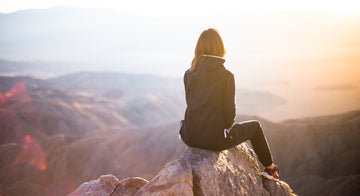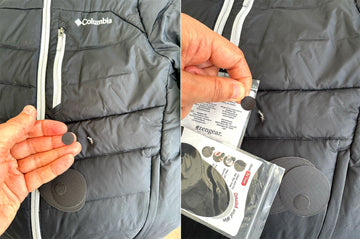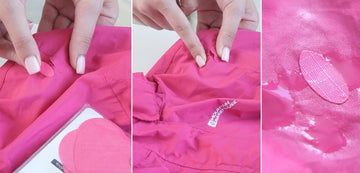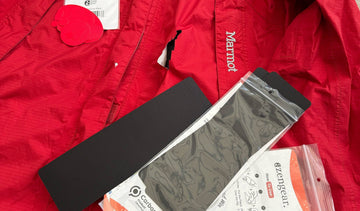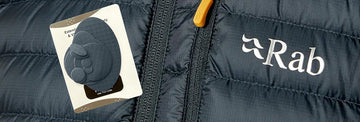How to Prevent Blisters while Hiking: 20 Essential Tips for Happy Feet
by Emily Jannet on May 22, 2023
Hiking is an exhilarating activity that allows you to connect with nature and challenge yourself physically. However, one common issue that hikers often face is blisters. Blisters can turn a pleasant hike into an uncomfortable experience, causing pain and discomfort. But fear not! In this article, we will explore the best strategies to prevent blisters while hiking, ensuring you have a blister-free adventure. So lace up your hiking boots and let's dive into the world of blister prevention!
How to Prevent Blisters while Hiking
Ah, the great outdoors! The fresh air, stunning views, and the thrill of exploring new trails. However, the wrong pair of shoes or socks can quickly turn your hiking experience into a painful ordeal. To keep blisters at bay and ensure happy feet throughout your journey, follow these expert tips:
-
Invest in Quality Footwear
Choosing the right hiking boots or shoes is crucial in preventing blisters. Opt for well-fitting footwear that provides ample support and cushioning. Ensure there is enough room in the toe box to prevent friction. Avoid wearing brand new shoes on long hikes as they can cause blisters due to lack of break-in time.
-
Wear Moisture-Wicking Socks
Moisture is one of the leading causes of blisters. Invest in moisture-wicking socks made from synthetic or merino wool materials. These socks draw moisture away from your feet, keeping them dry and reducing the likelihood of blisters. Avoid cotton socks as they retain moisture and can lead to friction-induced blisters.
-
Double Up on Socks
For added protection against blisters, consider wearing two pairs of socks. Start with a thin moisture-wicking liner sock followed by a thicker hiking sock. This layering technique helps to reduce friction and keeps your feet comfortable during long hikes.
-
Break in Your Shoes
Before embarking on a challenging hike, make sure to break in your hiking shoes. Wear them around the house, on short walks, and gradually increase the duration and intensity of wear. This process allows the shoes to mold to your feet and minimizes the risk of blisters caused by stiff or ill-fitting footwear.
-
Keep Your Feet Dry
Moisture is the enemy when it comes to blister prevention. Take breaks during your hike to air out your feet and change into dry socks if needed. Carry a small towel or extra pair of socks to wipe away sweat and moisture, keeping your feet dry and blister-free.
-
Use Moleskin or Blister Patches
If you notice any hotspots or areas prone to blisters on your feet, apply moleskin or blister patches before they turn into full-blown blisters. These protective patches provide a barrier between your skin and the shoe, reducing friction and preventing blisters from forming.
-
Consider Silicone Heel Protectors
Silicone heel protectors can be a valuable addition to your hiking gear when it comes to blister prevention. These soft, gel-like inserts provide cushioning and reduce friction on the heels, where blisters commonly occur. Simply slip them into the back of your hiking shoes or boots to create a protective barrier between your heel and the shoe. Silicone heel protectors are particularly useful if you have a history of heel blisters or if you're breaking in new footwear.
Including silicone heel protectors in your blister prevention strategy can significantly enhance your hiking experience and keep your heels free from discomfort.

-
Choose the Right Shoe Lacing Technique
Believe it or not, the way you lace your shoes can affect the occurrence of blisters. Experiment with different lacing techniques to find the one that works best for you. The "heel lock" technique, where you lace the uppermost eyelets in a way that secures your heel, can be particularly effective in preventing heel blisters.
-
Take Breaks and Rest Your Feet
During long hikes, it's essential to take regular breaks and give your feet a chance to rest. Remove your shoes and socks and allow your feet to breathe. This not only helps in keeping your feet dry but also reduces the pressure and friction that can lead to blisters. Use this time to massage your feet gently and stretch your ankles and toes for added comfort.
-
Use Lubrication
Another effective method to prevent blisters while hiking is to use lubrication on areas prone to friction. Apply a thin layer of petroleum jelly, specialized blister prevention products, or even antiperspirant to areas like the heels, toes, and sides of your feet. This reduces friction and provides a protective barrier, minimizing the chances of blisters forming.
-
Trim Your Toenails
Long toenails can contribute to discomfort and increase the risk of blisters. Before heading out for a hike, make sure to trim your toenails straight across to prevent them from rubbing against your shoes or digging into neighboring toes. This simple step can make a significant difference in blister prevention.
-
Gradually Increase Hiking Distance and Intensity
If you're new to hiking or planning a particularly challenging trek, it's essential to build up your hiking endurance gradually. Gradually increasing your hiking distance and intensity allows your feet to adjust and toughen up over time. This reduces the likelihood of blisters caused by sudden intense activity.
-
Keep an Eye on Hotspots
While hiking, pay attention to any areas on your feet that feel hot or irritated. These are the early warning signs of potential blisters. As soon as you notice a hotspot, take immediate preventive action by applying moleskin, blister patches, or adjusting your socks or lacing technique. Catching blisters in their early stages can prevent them from becoming more painful and disruptive later on.
-
Choose the Right Time of Day for Hiking
Did you know that the time of day you choose for hiking can affect your risk of developing blisters? It's best to plan your hikes during cooler times of the day, such as early morning or late afternoon, when your feet are less likely to sweat excessively. This reduces the moisture content inside your shoes and lowers the chances of blister formation.
-
Stay Hydrated
Proper hydration is crucial for overall hiking comfort, including blister prevention. When your body is adequately hydrated, your skin remains supple and less prone to friction. Remember to drink plenty of water before, during, and after your hike to keep your feet and skin hydrated.
-
Pay Attention to Your Socks' Condition
Inspect your socks regularly for any signs of wear and tear. Worn-out socks can develop rough areas or thin spots that can cause friction and lead to blisters. Replace your socks as needed to ensure they provide adequate cushioning and protection for your feet.
-
Choose the Right Hiking Trails
The choice of hiking trails can significantly impact your risk of developing blisters. Opt for well-maintained trails with even surfaces to reduce the chances of stumbling or twisting your ankle, which can lead to increased friction and blisters. Additionally, trails with softer terrain, such as dirt or grass, are generally gentler on your feet compared to rocky or uneven surfaces.
-
Pack Proper Foot Care Supplies
When preparing for a hiking trip, don't forget to pack essential foot care supplies in your backpack. Include items such as moleskin, blister patches, adhesive tape, and a small pair of scissors. Having these supplies readily available allows you to address any discomfort or blisters as soon as they arise, preventing them from worsening and interrupting your hike.
-
Take Advantage of Trekking Poles
Trekking poles are not only great for stability and balance during hiking but can also help prevent blisters. By distributing some of the weight and pressure off your feet, trekking poles can reduce the strain on your feet and minimize the chances of developing blisters. They also provide additional stability, especially when navigating challenging terrains or steep descents.
-
Avoid Friction-Causing Clothing or Gear
Besides footwear and socks, it's important to consider other clothing and gear that can contribute to friction and blister formation. Avoid wearing rough or abrasive materials that can rub against your skin, such as rough-seamed socks or ill-fitting clothing. Opt for moisture-wicking, seamless, and properly fitting clothing that reduces friction and keeps your skin comfortable.
Conclusion
Blisters can quickly turn a fantastic hiking adventure into an uncomfortable experience. By following these expert tips on how to prevent blisters while hiking, you can keep your feet happy, healthy, and ready for new trails. Remember to invest in quality footwear, wear moisture-wicking socks, use silicone heel protectors, and pay attention to proper foot care. Take preventive measures, such as using moleskin, adjusting lacing techniques, and taking regular breaks to rest your feet. By implementing these strategies, you can minimize the risk of blisters and enjoy your hikes to the fullest.
So lace up your boots, prepare your gear, and embark on blister-free hiking adventures!

